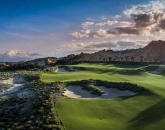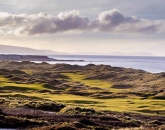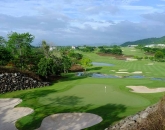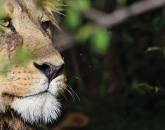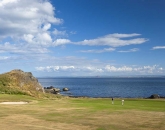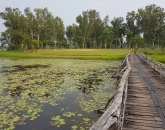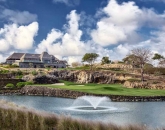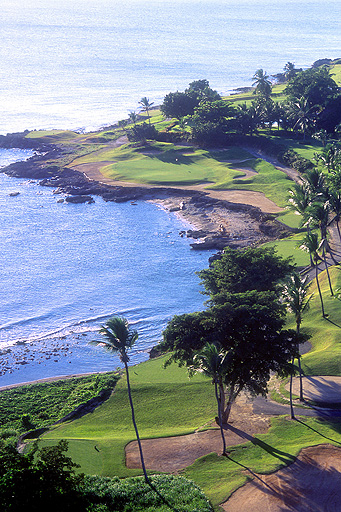 Long before the Dominican Republic became the world’s major producer of fine, hand-crafted coronas and robustos, the original Indian inhabitants – known as Tainos – wrapped and smoked rudimentary versions of today’s Davidoff, La Aurora and the exquisite Opus X by Arturo Fuente, with its distinctive gold and red band.
Long before the Dominican Republic became the world’s major producer of fine, hand-crafted coronas and robustos, the original Indian inhabitants – known as Tainos – wrapped and smoked rudimentary versions of today’s Davidoff, La Aurora and the exquisite Opus X by Arturo Fuente, with its distinctive gold and red band.
But it's not just cigars classified as super-premium that make this place famous. Already home to the infamous Teeth of the Dog, two Robert Trent Jones Sr. tracks, and other offerings from Nick Faldo, Gary Player and Jack Nicklaus, the Dominican Republic is a superb destination for the aficionado of top-notch cigars and challenging tropical golf – two elements of the "good life" that naturally go hand in hand.
Getting started
“It must be one of the best 19th hole views in the world,” says Olivier Brizon, Director of Golf Operations, as we share some cold beers at the end of our first round at Punta Cana Resort & Club’s La Cana Golf Course on the east coast. From the elegant clubhouse, the 18th fairway and green skirt the coastline with a superb white sandy beach and the sparkling turquoise waters of the Caribbean Sea beyond.
Just as Dominican cigars have different flavours, strengths and nuances, so too, do the golf courses. Dominated as much by abstract expanses of sand as green fairways, La Cana Golf Course certainly has its own character. Innovative, beautiful and fun, this tropical gem designed by PB Dye (son of Pete), is a blend of long, rolling inland holes and several spectacular holes that line the ocean.
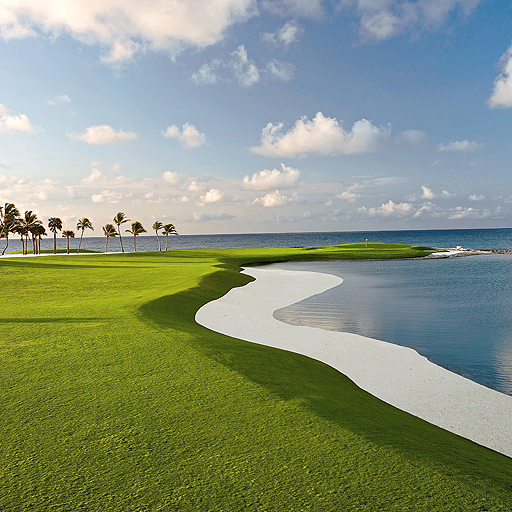 The tee shots are wide and inviting, and it’s the second shots and the delicate ones around the greens that provide the real challenge. The seventh boasts a cluster of 21 pot bunkers that PB jokingly refers to as ‘Hecklebirnie’, a type of golfer’s purgatory, according to Scottish lore. The course’s signature hole is a spectacular par-three on the back nine that can be played from any of a series of tees dependent upon the golfer’s skills. Punta Cana Resort & Club also features Dye’s Hacienda Golf Course (premiering in early 2012), and Tom Fazio’s Corales Golf Course, that culminates in a striking 18th hole with a dramatic carry over a rocky bay.
The tee shots are wide and inviting, and it’s the second shots and the delicate ones around the greens that provide the real challenge. The seventh boasts a cluster of 21 pot bunkers that PB jokingly refers to as ‘Hecklebirnie’, a type of golfer’s purgatory, according to Scottish lore. The course’s signature hole is a spectacular par-three on the back nine that can be played from any of a series of tees dependent upon the golfer’s skills. Punta Cana Resort & Club also features Dye’s Hacienda Golf Course (premiering in early 2012), and Tom Fazio’s Corales Golf Course, that culminates in a striking 18th hole with a dramatic carry over a rocky bay.
Inland from Punta Cana, the island is a diverse landscape of rural villages and bustling communities, continually serving up slices of colourful Caribbean life. Near Higuey, we discovered a local cigar place called Jovanny's Cigar Factory. Inside the weatherboard interior, the cigars being made didn’t have colourful bands or well-known names, but they were a decent smoke costing only a few pesos each. We stocked up on a small selection of robustos and hit the road through the sugarcane fields towards Casa de Campo, where a tempting trio of Peter Dye-designed courses awaited: the Teeth of the Dog, The Links and Dye Fore.
Into the Teeth
It was 7.30am the next morning outside the caddy master’s office at the Teeth of the Dog. Golf bags and carts were neatly lined up in rows. The scene was a hive of activity. Caddies wearing gold, blue and white shirts to denote their experience busily filled water containers, cleaned clubs and kept an eye out for clients. A cluster of Americans with newly purchased cigars emerged from the nearby pro shop and headed for the practice putting green. There was a palpable buzz in the air at this epicentre of Caribbean golf.
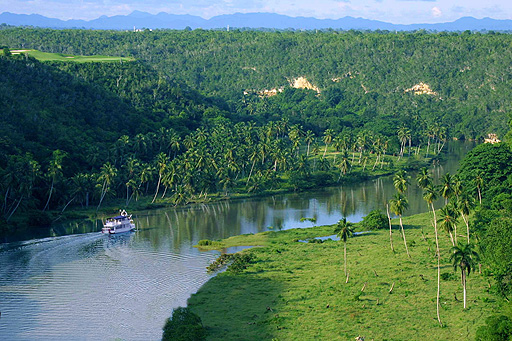 Peter Dye is quoted as saying that he actually only created 11 holes on the Teeth of the Dog; God created the seven skirting the Caribbean Sea. Even though the site was stunningly beautiful when he first saw it in 1969, it was covered with thick underbrush, stubby tropical trees and cacti. Dye and his construction crew oversaw a staff of 300 Dominicans who would mould the course essentially by hand.
Peter Dye is quoted as saying that he actually only created 11 holes on the Teeth of the Dog; God created the seven skirting the Caribbean Sea. Even though the site was stunningly beautiful when he first saw it in 1969, it was covered with thick underbrush, stubby tropical trees and cacti. Dye and his construction crew oversaw a staff of 300 Dominicans who would mould the course essentially by hand.
After clearing the underbrush with machetes, workers used sledgehammers and pickaxes to crack the bare coral rock that covered the area. Noting how sharp the coral became when busted apart, the workers referred to it as dientes del perro, a phrase that eventually stuck as the name for the finished classic – Teeth of the Dog, a track that is regularly ranked in the world’s top 100 courses.
Teeing off at the 157-yard par-three fifth, the first of the coastal holes, it was an appropriate moment to light up my first Dominican cigar, a lovely Aurora Preferidos 1903 Edition, to help steady the nerves. This is a par-three to remember and one scary looking hole. The only option is to hit the green because short, left or long is definite shark food. In the 1992 Shell’s Wonderful World of Golf match between Fred Couples and Raymond Floyd, Floyd tried to hold a seven-iron against the wind and made five after his ball came to rest among the ocean rocks.
The signature holes on the back nine are numbers 15 and 16, a medium length par-four and long par-three. In direct contrast to the front nine, these holes are lined along the entire right side by the Caribbean and are elevated above a coral cliff.
After our encounter with the Teeth, our golfing egos had taken a real beating. Just as well that we were staying at Casa de Campo, one of the most luxurious resorts in the Caribbean. Besides the three golf courses, there’s tennis, clay pigeon shooting, a marina, horseback riding, charter fishing, nine restaurants and the remarkable Altos de Chavron. Built entirely by hand in the 1970s, this is an exact recreation of a 15th-century Mediterranean village, complete with cobbled streets. Here a collection of fine restaurants with enviable settings provides a plethora of options for wining and dining.
Fore Warned
Later that evening at the beachside El Pescador grill, we struck up a conversation with some fellow golfers about the Dye Fore course. It was enough to whet our appetites for the next day’s round, and competed for our attention with the two main-course masterpieces that were placed before us: ‘Flambéed Swordfish and River Shrimps with an Aged Rum served with plantain and Apple Croquettes’ and ‘Mixed Seafood Cassolette Cooked in a Thai Curry and Coco Sauce, served with a Ginger Flavoured Basmati Rice.’
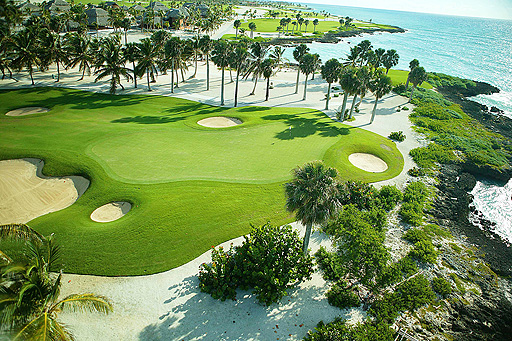 Dye Fore is a 7,714-yard monster that marches along a plateau perched 500ft above the mesmerizing Chavron River. If the river snaking its way through this dramatic landscape looks familiar, it is because director Francis Ford Coppola when filming his epic movie Apocalypse Now used it as a location.
Dye Fore is a 7,714-yard monster that marches along a plateau perched 500ft above the mesmerizing Chavron River. If the river snaking its way through this dramatic landscape looks familiar, it is because director Francis Ford Coppola when filming his epic movie Apocalypse Now used it as a location.
As we stalked our putts on the slick green of the 610-yard par- five 10th, a course worker who had been trimming a nearby tee box approached us. "Hey amigos, where are you from? You want good golf balls? Twenty Titleist for US$20 a bag?" He surreptitiously removed a package from inside his shirt as if he were about to pull out some illegal drugs. Having already lost a few on the front nine and at US$20 for just three Pro V1x in the pro shops, it was an offer we couldn’t refuse. Paul pulled some notes from his wallet and so did I. The sharp-eyed grounds crew undoubtedly keep an eye on golfers as they hit, and any wayward shots are quickly pocketed, cleaned and repackaged, finding their way back into circulation the next day.
With a collection of forced carries over yawning chasms, plus the speed and severity of many of the putting surfaces, Dye Fore is a real test even from the forward tees.
Cigar Aficionado
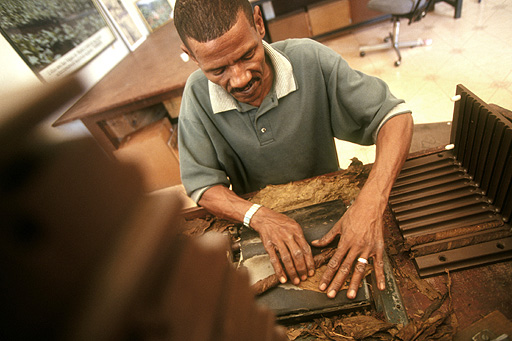 Any ‘pars and cigars’ experience would not be complete without a visit to the vibrant capital, Santo Domingo. This Old Spanish colonial city founded by Bartholomew Columbus (brother of Christopher) in 1496, was designated a UNESCO site of World Heritage Importance in 1990. Like a catalogue of New World firsts, it contains many of the oldest buildings in the Americas. The weathered stonework, heavy iron-studded doors and beautiful colonial balconies are testimony to the grand style in which Columbus and the early colonists lived.
Any ‘pars and cigars’ experience would not be complete without a visit to the vibrant capital, Santo Domingo. This Old Spanish colonial city founded by Bartholomew Columbus (brother of Christopher) in 1496, was designated a UNESCO site of World Heritage Importance in 1990. Like a catalogue of New World firsts, it contains many of the oldest buildings in the Americas. The weathered stonework, heavy iron-studded doors and beautiful colonial balconies are testimony to the grand style in which Columbus and the early colonists lived.
Of particular interest to cigar smokers, Santo Domingo is where many of the Dominican Republic’s best cigar shops are to be found, with several on the Calle El Conde promenade offering all the best names at very reasonable prices. Beside the Parque Colon in the Zona Colonial are two cigar factories owned by the same tobacco company, Monte Cristi de Tobacas, which produces such cigars as the non-Cuban Montecristo, Cohiba and Caoba brands.
Hundreds of different processes are involved in the creation of a good cigar, from the growing of the tobacco around Santiago in the north, to the rolled cigars being packed into cedar boxes. But it’s in the rolling rooms, the very heart and soul of the cigar-making process, that we were able to fully appreciate the craftsmanship handed down through generations of rollers.
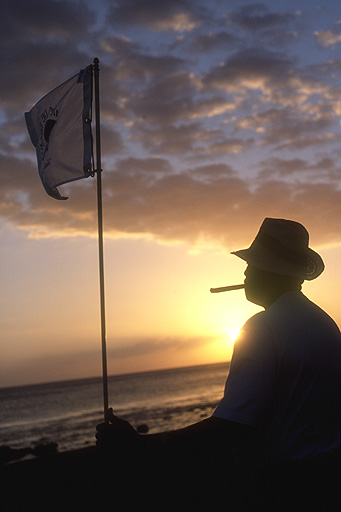 As we entered the second floor of the Cohiba factory with views across to the Christopher Columbus statue in Parque Colon, the pungent aroma of rich tobacco leaf mingled with cigar smoke. Several rollers enjoyed the fruits of their labour as they worked. We were introduced to Fausto Rutinel who has been rolling cigars for nearly four decades. Using only a metal knife, a wooden board, a small guillotine and a bit of vegetable gum, he constructs around a 100 cigars a day. “Cohiba Esplendidos are my favourite,” he said, taking a deep puff on one of his creations.
As we entered the second floor of the Cohiba factory with views across to the Christopher Columbus statue in Parque Colon, the pungent aroma of rich tobacco leaf mingled with cigar smoke. Several rollers enjoyed the fruits of their labour as they worked. We were introduced to Fausto Rutinel who has been rolling cigars for nearly four decades. Using only a metal knife, a wooden board, a small guillotine and a bit of vegetable gum, he constructs around a 100 cigars a day. “Cohiba Esplendidos are my favourite,” he said, taking a deep puff on one of his creations.
In the next room, it was Adalberto Delance’s job is to inspect the gauge size and uniformity of the finished product. The quality control is thorough, and we watched as he placed to one side any cigars that didn’t make the grade. After a tour of the cigar factory it’s almost mandatory to visit the shop on the ground floor to select a cigar or buy a box.
On our last day in the Dominican Republic Paul and I played a final round at Guavaberry Golf & Country Club, a Gary Player signature course about 45 minutes from the capital. It’s a big, gently sloping track that features one of the island’s most challenging finishing holes, a 466- yard par-4 with a green tucked behind an enormous bed of coral rock that runs along the entire right side of the fairway.
In the evening we prepared for the flight home by carefully packing away our precious memories of golf scorecards, Teeth of the Dog golf caps and newly acquired boxes of Arturo Fuente cigars. Golfing in cigar country or smoking top-notch cigars in golf country? I’m not sure which way around it is. But, frankly, does it really matter?


